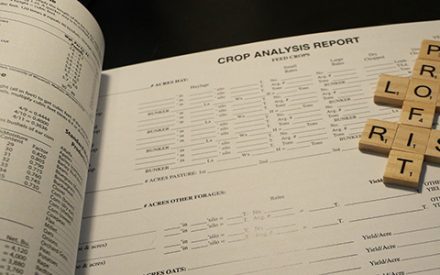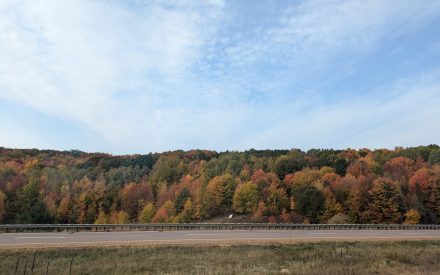Video Summary
Kevin Erb, program manager, Conservation Professional Training Program, UW–Madison, presents a comprehensive overview of manure management safety and spill response in Wisconsin. This session covers trends in manure application, transportation risks, dragline safety, spill containment procedures, and regulatory requirements.
Learn how to prevent accidents, respond effectively to spills, and protect water quality while managing large volumes of manure. Kevin also shares insights from statewide data on manure-related incidents and offers practical recommendations for farmers and applicators.
Resources
Transcript
0:05
Appreciate everybody’s time today and we’re going to spend a few minutes here talking.
0:10
As Dan said, a few things for fall safety things, but also preventing problems and a few things that you may not be aware of.
0:19
So we’ll go ahead and get started here.
0:23
So we think about manure.
0:25
Here in Wisconsin, the dairy industry produces about 13 billion gallons of manure parlor water runoff water annually.
0:33
It’s enough to fill a football field 5.4 miles deep.
0:37
From the last data set that we have, farmers apply about 1/3 of that manure for higher manure applicators in the state apply about 2/3 of the volume.
0:48
And we know over time that that total volume is increasing as we’re capturing more runoff.
0:54
And I said 13 billion gallons, but we’re really beginning to wonder if that’s accurate.
1:01
Before 2017, it was fairly steady, consistent, every milking head, 10,000 gallons of manure and wastewater annually held true whether the young stock were there or raised off site.
1:14
As we’ve seen more runoff control as farms are doing things differently with their water, I’m thinking it’s closer to 12 to 13,000 gallons per milking head.
1:25
We’ve got some data and we’re going to start looking at that here over the next few months or so.
1:31
So we’ve got about 270 for-hire manure application firms in the state.
1:36
We see a lot of manure being moved in semis.
1:39
We’ve got more than 400 semi tankers used to move manure longer distances to dumpsters to frack tanks and about 375 miles of dragline hose.
1:51
What’s interesting is that we’ve seen the steady increase in manure being moved longer distance and semis going back more than 20 years.
2:00
That’s that top line here.
2:02
If we look at the bottom 2 long lines, that one is tractor-pull tankers and straight trucks.
2:09
Obviously we tend to see the straight trucks more in the driftless area, but those numbers pretty much leveled off with some of the road weight enforcement in the late 20, 2000s and have held fairly steady.
2:23
But the big growth area is semis moving manure long distances.
2:28
Another big change that we’ve seen is the manure application industry is switching to the larger hoses.
2:34
When we first started working with this industry 20 some years ago, most of the applicators were happy to get 400 to 600 gallons a minute through a six inch hose.
2:44
Now a lot of them are pushing 12 to 1300 gallon a minute through 6 inch.
2:49
And as you can see here, we’re going to more of the 8 inch and 10 inch.
2:54
Even talk to a number of farmers that are doing their own that have bought 12 inch hose.
2:59
Obviously the larger diameter hose, the more volume, lower friction loss and less fuel per gallon to move it.
3:07
We’re seeing technology adoption pretty much level off about 78% or so of the manure drag lines in the state do have the capability to do GPS as applied mapping.
3:21
We’re also seeing an increase in solid manure spreaders.
3:24
And what we feel here is these increases really been tied to efforts to incentivize digesters.
3:32
So we see a couple of bumps, 2007, 2011 but more recently 2010 and onward with the increasing number of manure digesters and treatment systems that are out there.
3:45
Some other changes we’ve seen over the last 25 years, we’re seeing lower application rates and increasing setbacks.
3:53
We now have the NR 151 Silurian regulations in the eastern part of the state.
3:58
The CAFOs are required to empty their storage sometime in October or November to have a minimum of six months of winter capacity.
4:07
They don’t spread in winter like they used to.
4:10
And one of the other shifts that we’ve seen since 2017 is more farmers doing their own manure.
4:17
Buying their own draglines is particularly accelerated in 2019, 2018 when we had some very wet falls.
4:25
Other changes that a lot of us have seen, we’re seeing more manure being top dressed on hay fields, alfalfa manure going on either prior to or being top dressed on cover crops.
4:37
Like I said that application window is narrowed because of regulations.
4:41
So farmers have responded by when else can we get manure out there.
4:46
We’re also seeing implementation of in-season application several Rain 360 irrigation systems around the state.
4:54
I do have a little bit of a concern of increased risk of manure getting to drain tile from in season application, particularly on long term no tail fields, but also on our fields in the heavy clay soils that tend to crack.
5:09
We know in Dodge County we’ve traced manure down 16 feet through cracks in the clay soil before it hit the aquifer and contaminated neighbors wells.
5:19
So it is something that we’re going to need to keep a little bit of an eye on.
5:23
We have a few folks in the state also playing around with a dragline and applying to standing corn prior to the V4 stage as well.
5:32
So to paraphrase Peter Parker, my brother’s really into superheroes, so I guess it rubbed off on me a little bit.
5:38
With great volumes of manure comes great responsibility.
5:41
And we look at the state, we really haven’t increased cow numbers over the last 20 years, but what’s happened is we have more cows on fewer farms.
5:53
And so the farms that are here are dealing with significant volumes.
5:58
So as we’re going into that fall application, a couple of thoughts in terms of manure application of maps, knowing your setbacks and making sure the person, the tractor understands those maps.
6:09
So the picture on the left here is Calumet County where we see solid manure spread within the set back to the stream that’s in the trees.
6:19
The picture on the right is a in-cab map is a triangle there showing the location of the truck and you see the well setbacks and the W soils in that one.
6:32
The center picture is actually on my Home Farm in Illinois, thanks to Google Earth.
6:37
And we’re bringing in the solid product and we’re supposed to, in this case with this particular product, stay back 200 feet from the stream, which is off to the right there.
6:47
And what we’ve actually found is unfortunately that people are very bad guessers as far as what that set back actually is.
6:55
And so if you don’t have that marked, you don’t.
6:59
In this case it was marked after they went too far with that tillage pass angle there parallel to the railroad.
7:06
It’s easy to get too close to where you shouldn’t be.
7:10
So, I always recommend that we only include on the map the setbacks that are needed.
7:15
So. if we’re spreading now, the person in the cab of the tractor does not need the setbacks showing frozen and snow-covered soil.
7:22
From a DNR hauling audit perspective, and I did talk with them earlier this week, the driver should only have in the cab of the truck or tractor the map they’re using that day.
7:33
The farm needs to have the maps for winter spreading approved fields, but only the setbacks that are being dealt with should really be on the map that that applicator has that day.
7:45
Like I said, that nutrient management plan should have all of those maps there in case you need them.
7:50
So we need to be thinking about the best routes and Traffic Safety.
7:54
And this is something that more nutrient management planners are starting to sit down with the farmer, with the manure applicator and figuring out, OK, we’ve got these fields we want to go to.
8:07
What’s the best way to actually get there?
8:09
What side of the road should we actually be unloading on if we’re doing a dumpster? Like the photo here.
8:17
In terms of safety, be thinking about road width.
8:21
In this case, very narrow road..
8:23
So we’ve got some challenges here in terms of safety.
8:30
Weight limits are also an issue as well.
8:33
Semis, like I said, are becoming more and more popular in working with county sheriff’s offices.
8:39
We really have a good set of recommendations.
8:42
There should be no more than two semis together.
8:44
In this case, we’ve got 1 dumping and one waiting, and then we’ve got a gap.
8:50
Generally we like at least a quarter mile between the next one or two semis and then another gap.
8:56
And so the top photo here, there’s a hill and so the next two are parked on the other side of the hill.
9:03
When one pulls away, he radios the next one.
9:05
They come over the hill for safety.
9:08
The bottom photo here shows that gap between the semis fairly well.
9:14
Manure gases.
9:16
Another issue we need to be thinking about.
9:18
We have had fatalities both of humans and of livestock in open areas near manure pits when we start agitating.
9:27
Hydrogen sulfide monitors are recommended for anybody working near manure.
9:33
The one that you see pictured here is good for three years, cost less than $200, should be clipped up next to your collar where you’re breathing.
9:45
Really something that we highly recommend that you be thinking about even if you’re not regularly out when the manure is being applied.
9:54
We know that even applications are essential to avoid problems next year.
9:59
You can see here the photo on the left.
10:01
We’ve got a nice even application on the left and then on the right it’s a semi solid side-slinger and we really don’t have a good even application pattern out there.
10:13
Photo on the right is one.
10:15
Also from a field day in Calumet County.
10:17
You can see we’ve got a couple of those drop nozzles plugged.
10:20
We’ve got some gaps there in the application.
10:23
So really knowing the equipment is functioning the way it should, spreading evenly is essential.
10:30
Manure drag lines are a safety issue.
10:33
Most of us don’t think about it, but when we’re pumping manure, it’s under fairly significant pressure.
10:40
But the real dangerous time is when they are blowing that line out and sending the pig through.
10:46
And this video is from the North American Manure Expo here in Wisconsin a couple years ago.
10:53
I’ll play the clip, but I want you to focus on how far and how quickly that dragline whips when it’s pressurized with air and we suddenly have a release count 3123.
11:35
What you saw coming out of there was white.
11:38
That’s actually when the pressure is released like that, the temperature drops, and we actually had snow flying out of that in August.
11:49
So I think it’s important to be prepared for manure spills and incidences.
11:53
The Wisconsin DNR philosophy is having an accidental spill is not illegal.
11:59
Failing to deal with it properly, clean it up, contain it, is where you’re going to get in trouble.
12:05
Under Wisconsin law, this definition of a spill is any hazardous substance that has the potential to impact surface or groundwater.
12:15
Our CAFOs that are under NR.
12:16
243 must report all spills even if they don’t meet that particular definition.
12:23
So when it comes to spills we kind of have this six step process.
12:27
We like people to think about.
12:29
Obviously the first step is control the spill, turn off the pump, shut the valve, keep anything more from coming to that particular site.
12:39
And then we have three steps with the for-hire manure applicators, the employees these kind of shift around a little bit based on the situation notifying your supervisor containing it may be dropping that toolbar in working up the ground a little bit and contacting the authorities.
12:57
That’s going to be very subjective.
12:59
If we are on the state highway and we or we’ve got nosy neighbors, there’s a safety concern, we probably want to contact the authorities first.
13:09
On the other hand, if we’re next to a stream and if I take time to call the boss versus drop that toolbar, work it in a little bit, it’s going to get in the stream, I’m going to want to contain it first and then call the boss.
13:23
So this is kind of subjective.
13:25
It’s site specific.
13:27
Once you’ve got it contained and those steps, clean it up, restore the site, and then document that you did everything the way you should so that you’ve got that information for the future.
13:39
Now every five years Extension goes through and summarizes the manure spills and incidences in the state.
13:46
The last five year study we had, we documented over 700.
13:50
We’re updating that data set right now.
13:53
But just a couple of quick insights out of that previous five year data set.
13:58
So we look at when transportation problems occur, those tend to peak in the fall, but also in April, excuse me, in May.
14:06
That yellow line, the green line is our land application issues.
14:11
Those tend to peak in March, but also in fall as well.
14:16
Interestingly, if we compare those to the two previous five-year studies, we see a lot fewer percentage-wise of incidences land application occurring with that spring run-off.
14:28
That’s because we’re not spreading as much and people are really paying attention in that February and March time frame.
14:36
In terms of where problems happen, we figure that about 38% happened at the farm, about 38% between the field and the farm.
14:45
Land application is responsible for where they occur about 23% of the time.
14:51
Comparing CAFOs to non-CAFOs, we tend to see a few more problems with the smaller farms at the farmstead, about the same percentage.
15:01
In terms of incidences with land application and the CAFO’s, simply because we’re moving manure farther distances tend to see more transportation related problems.
15:12
A lot of the transportation related problems are operator error and so really making sure that people are well rested, paying attention makes a big difference.
15:24
We average 1 truck or tanker tip over a month and a lot of those are fatigue related.
15:30
What I think is really positive as we wrap things up here is that when I look at the percentage of instances being reported either by the farmer or by the manure hauler, those are those two bottom large pieces of the pie.
15:44
And so more than 70% of the time it’s the farmer or the manure applicator rather than citizens or the agencies that are doing the reporting.
15:55
With that, I will wrap up and we take questions in the chat and go from there.
Badger Crop Connect
Timely Crop Updates for Wisconsin
Second and fourth Thursdays 12:30 – 1:30 p.m.
Live via Zoom

 ▶ Fall 2025 Financial Assistance for Producers
▶ Fall 2025 Financial Assistance for Producers ▶ Fall 2025 Ag Policy Update
▶ Fall 2025 Ag Policy Update ▶ Fall 2025 Corn and Soybean Market Outlook
▶ Fall 2025 Corn and Soybean Market Outlook ▶ November 6 Ag Weather Outlook for Wisconsin
▶ November 6 Ag Weather Outlook for Wisconsin


